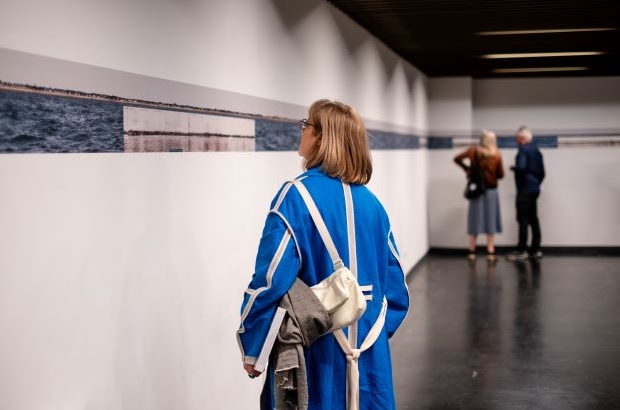- Daily & Weekly newsletters
- Buy & download The Bulletin
- Comment on our articles
D-Day Panorama: Installation in the Bourse commemorates 80th anniversary of Normandy landings
The photographic frieze serpents its way around the walls of the ground floor of the Bourse: a colour panorama of the infamous 90m stretch of Normandy coastline that on 6 June 1944 was the scene of the largest seaborne invasion in history.
To mark the 80th anniversary of the landings, the city of Brussels has inaugurated D-Day Panorama, a unique installation by Belgian photographer Jo Struyven that is showing until 15 September.
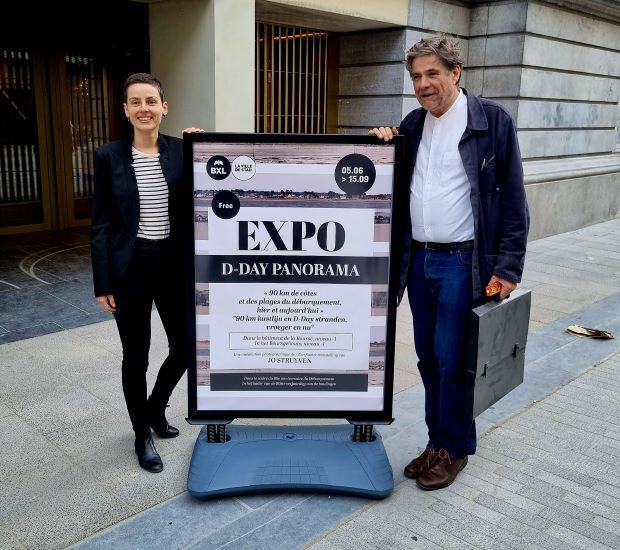
For Brussels alderwoman for culture Delphine Houba (PS), the work held particularly significant on the eve of the European elections because the EU had “enabled us to live in peace”. It was also a signal of alarm about the rise of the far right. “The projections for the European elections are very worrying, so here is an artist’s and a citizen’s work that I would like to salute,” she said.
The self-taught artist, known for his multiple-layered photographic installations, spent five years researching and creating the large-scale ‘then and now’ project. Interspersed along the colour frieze are meticulously placed black-and-white historical photos that were captured in the months leading up to the invasion.
These images were taken from a low-flying spitfire between January and March 1944 as the Allies masterminded Operation Overlord, the codename for the Battle of Normandy. The military photos detail significant landmarks that assisted the seacraft in their surprise attack, with typed captions noting the exact landing point of each regiment.
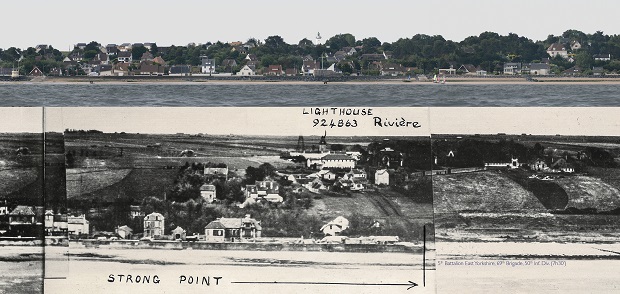
To recreate a similar vista, Struyven took some 1,500 images: twice from a fishing boat and once from a Zodiac dinghy. Navigating at a speed of 8 or 9 knots (15 km/h), while bobbing up and down in the water, he manually shot a photo every 10 seconds. A laboriously process followed, in which he digitally unifyied the photos, correcting distortions from the changes in perspective and neutralising the sea and sky to focus the viewer’s attention on the coast.
Even if surprisingly some scenes have barely changed in the ensuing decades, the installation presents a chilling picture of the coastline that was the scene of one of the deadliest theatres of war. Some 9,000 Allied troops were killed or reported missing on D-Day, along with an estimated 3,000 German soldiers.
While the modern-day panorama show bathers, walkers, tranquil villages and coastal resorts, the contrasting military shots present the perspective of the some 160,000 troops who were preparing to disembark under heavy artillery fire on that fateful morning. Together, they provide a unique and poignant visual testimony of the landings, which has particular resonance for the families of the soldiers involved.
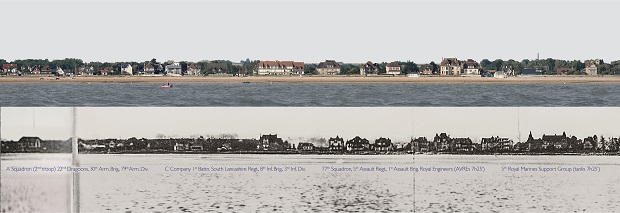
Struyven underlined the importance of commemorating D-Day during the Belgian presidency of the EU council because the opreation marked the birth of modern-day Europe from a social, cultural, economic and even a military point of view. “I never believed when I started this project in 2013 that after 70 years we would still be at war. As a side note, the Russian army still uses some WW2 weapons, so it remains relevant.”
It was his own natural curiosity that was the trigger for the colossal work. After photographing the Belgian coast, “what more interesting coastline could I find than the Normandy coast?”
A key element in his research was the discovery in an auction of a historic booklet containing original military images. Struyven then tracked down the others with the help of the War Heritage Institute in Brussels and museums in Caen in France and Portsmouth in the UK.
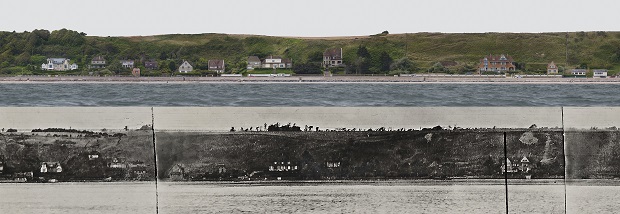
Along the way, he alighted on stories of the soldiers’ exploits and bravery, which served as a motivation to complete the long project and reproduce as precisely as he could their vision of the beaches. “After all, for many soldiers their first view of France was also their last,” notes the photographer in the preface of his accompany book, The Normandy Coast and Landing Beaches.
The five beaches were known by their codenames: Sword, Juno, Gold, Omaha and Utah, with the US-led Omaha landing (pictured above) proving to be the bloodiest. Struyven recounts the fate of the Bedford Boys, a group of friends from a small town in Virginia who all joined up in 1938. “Nineteen out of 30 in the group were killed immediately, four of them later. They included members of the same family and their story was the base for the film Saving Private Ryan.”
The photographer also pays homage to Belgian military hero Hugo van Kuyck, considered to be the architect of the D-Day landings due to his precise special maps of the landing beaches. Among his post-war exploits, he designed the celebrated Askoy sailing yacht, later bought by Belgian singer Jacques Brel.
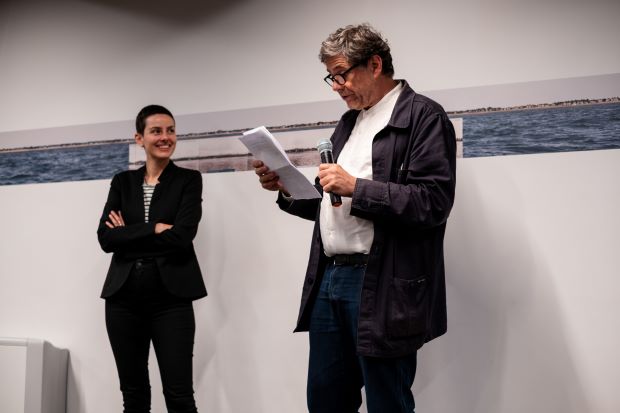
The 6 June assault also brought together 6 future couples, recounts Struyven. “On the morning of D-Day, a woman was on the beach picking up the swimming costume that she had left behind the day before. The Germans let her pass because she had a Red Cross armband. As she was a nurse, she spent two days helping the wounded and met her future husband.”
Despite this uplifting anecdote, Struyven’s final message is a reminder of the current political reality. “I hope that the giant operation that reunited numerous democratic countries against an oppressing and dictatorial force 80 years ago might be a source of inspiration for global peace today.”
D-Day Panorama
Until 15 September
Place de la Bourse
(Free entrance, floor -1)
Photos: ©City of Brussels; D-Day Panorama ©Jo Struyven












